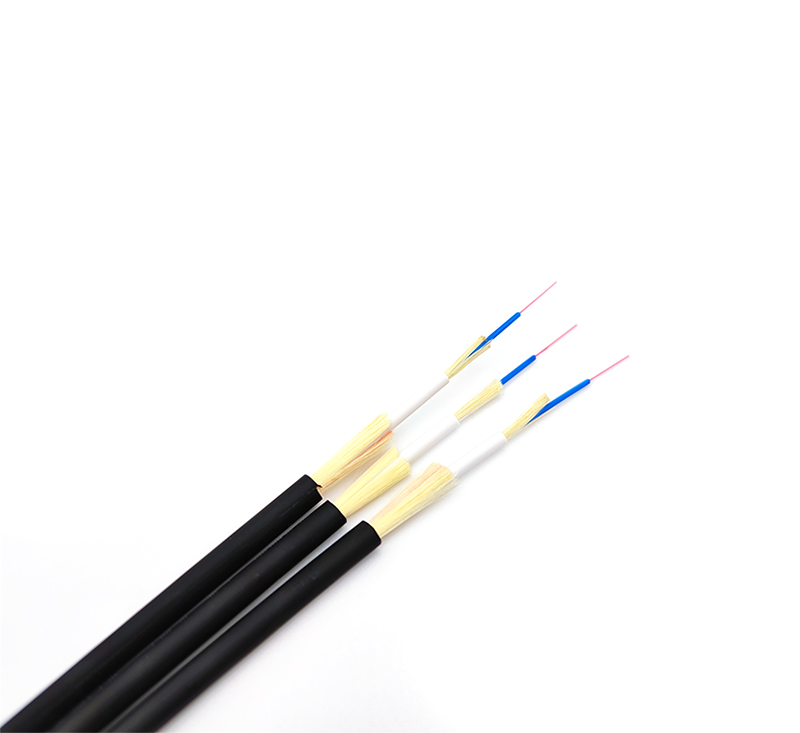The recent development characteristics of optical fiber cable and communication cable in manufacturing, construction and maintenance technology, analyze its development trend, and put forward some issues worth thinking about the development of optical fiber cable and communication cable technology and industry in China.
In 2000, the World Telecommunication Standard Conference approved the reclassification of the original G.652 fiber into G.652.A, G.652.8 and G.652.C category 3 fibers; the G.655 fiber was reclassified into G.655.A and G. .655.B two types of fiber. The subdivision of this optical fiber standard promotes the accurate use of optical fibers. While refining the standards, it also improves the index requirements of some optical fibers (for example, the tolerance of some optical fiber geometric parameters becomes smaller), and clarifies the requirements for different network levels and different optical fibers. Different index requirements (such as the regulation of PMD value) for optical fibers used in transmission systems, and some new index concepts (such as "longitudinal uniformity of dispersion", etc.) have been proposed, which have achieved good results in the rational use of optical fibers.
use. The revision of all these recommendations, the appearance of sub-recommendations and the drafting of new sub-recommendations mean that there are some improvements in fiber classification, indicators, and test methods, or there are important improvements; they all indicate that the quality of optical fibers is required to improve or the direction of application. The adjustment is a noteworthy new trend in optical fiber technology.
In order to meet the needs of the market, the technical indicators of optical fibers are constantly improving, various new optical fibers are emerging, and major companies are stepping up the development of new varieties.
(1) New large-capacity long-distance optical fiber for long-distance communication
Mainly some new G.655 optical fibers with large effective area and low dispersion maintenance, the PMD value is extremely low, which can easily upgrade the capacity of the existing transmission system to 10-40Gbit/s, and facilitate the use of distributed pulling on the optical fiber. The Mann effect amplifies, so that the transmission distance of the optical signal is greatly extended. For example, the Pure Mode PM series of new optical fibers introduced by Corning Company utilize polarization transmission and composite cladding, which are used in DWDM systems above 10 Gbit/s, and are said to be very suitable for the development and application of Raman amplifiers. The Teralight Ultra optical fiber launched by Alcatel cable has a record of transmitting a single channel of 40Gbit/s over a length of 100km and a total capacity of 10.2 Tbit/s. There are also some companies developing optical fibers with negative dispersion and large effective area, which improves the requirements of nonlinear indicators and simplifies the dispersion compensation scheme. It also works well in communication.
(2) New low water peak optical fiber for metropolitan area network communication
Simplification of equipment and cost reduction need to be considered in the design of the metropolitan area network, as well as the possibility of non-wavelength division multiplexing (CWDM) applications. The low water peak fiber in the extended band of 1360-1460nm greatly expands the bandwidth, greatly optimizes the CWDM system, increases the transmission channel, and increases the transmission distance. The design of some metropolitan area networks may not only require the low water peak of the optical fiber, but also require the optical fiber to have a negative dispersion value. Or G.655 standard fiber, use it for dispersion compensation, thus avoiding complex dispersion compensation design and saving costs. If the electromagnetic induction aluminum foil sealing machine adopts the Raman amplification technology in the optical fiber of the metropolitan area network in the future, this kind of network will also have obvious advantages. But after all, the specification of the metropolitan area network is not very mature, so the specification of the optical fiber of the metropolitan area network will change continuously with the change of the metropolitan area network mode.

(3) New multimode fiber for local area network
Due to the rapid development of local area networks and customer premises networks, a large number of integrated wiring systems also use multi-mode optical fibers to replace digital cables, so the market share of multi-mode optical fibers will gradually increase. The reason why multi-mode fiber is selected is because the transmission distance of the local area network is short. Although multi-mode fiber is 50% to 100% more expensive than single-mode fiber, light-emitting diodes can be used for its supporting optical devices, which are much cheaper than laser tubes. , and the multimode fiber has a larger core diameter and numerical aperture, which is easy to connect and couple, and the price of the corresponding connectors, couplers and other components is much lower. ITU-T has not yet accepted the 62.5/125μm type multimode fiber standard, but it is still widely used due to the needs of local area network development. The G.651 fiber recommended by ITU-T, that is, the standard multimode fiber of 50/125μm, has a small core diameter and is relatively difficult to couple and connect. Although it has some applications in some European countries and Japan, it is widely used in North America and Japan. It is rarely used in most European countries. In response to these problems, some companies have made improvements and developed a new type of 5O/125μm fiber graded (G1) fiber, which is different from the gradient index distribution of the traditional 50/125μm fiber core. The distribution has been adjusted to match the use of both 850nm and 1300nm windows, and this improvement may find a new market for 50/125pm fiber in local area networks.










